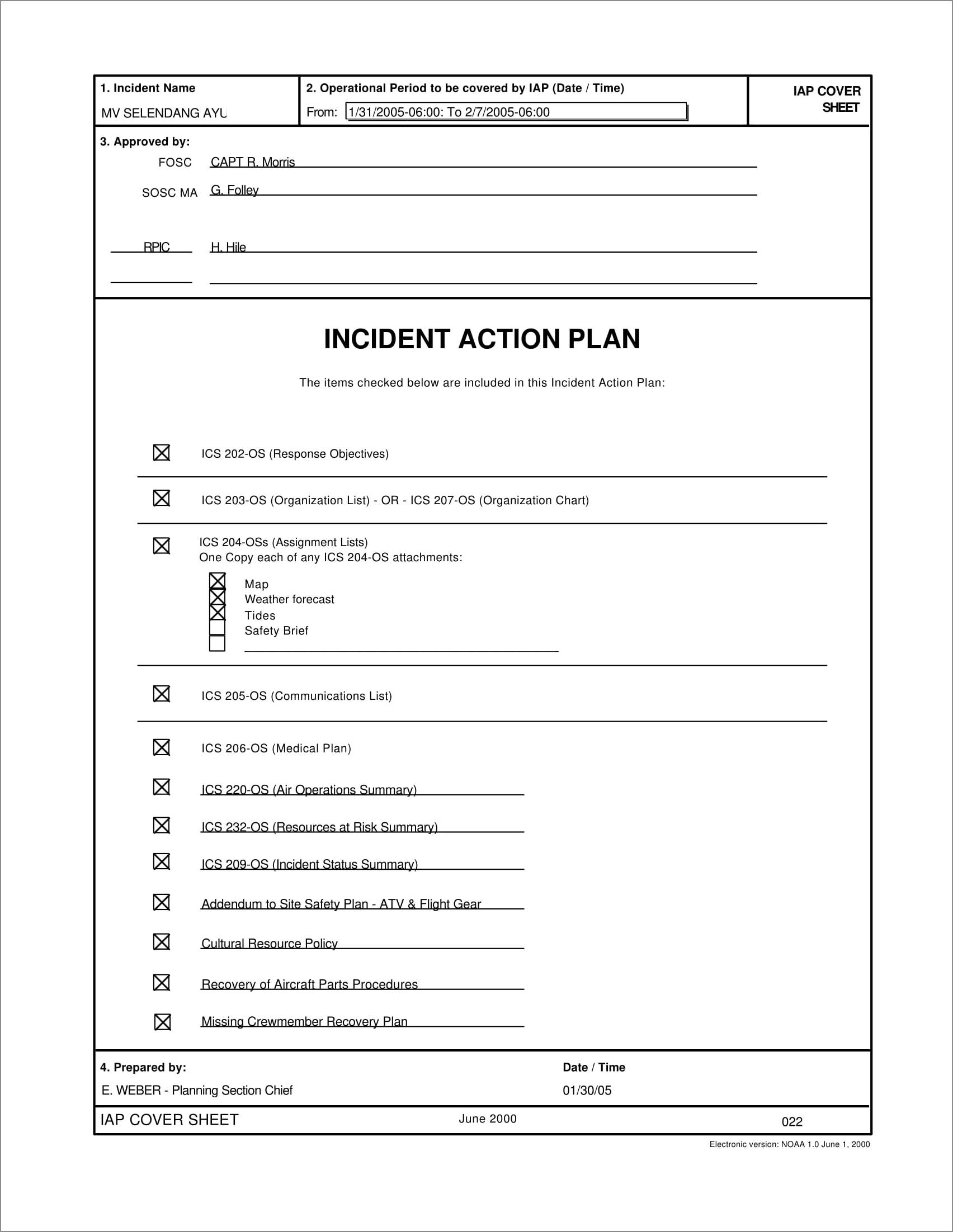
During emergencies, having a well-coordinated and organized response is crucial for ensuring the safety and well-being of the individuals involved. An incident action plan (IAP) plays a vital role in guiding emergency responders and agencies in effectively managing and mitigating incidents.
In this article, we will explore the significance of an incident action plan, its components, and how it contributes to a successful emergency response.
What is an Incident Action Plan?
An incident action plan (IAP) is a document that outlines the objectives, strategies, and tactics to be employed during an emergency incident. It serves as a roadmap for incident managers, first responders, and other involved parties, providing them with a clear understanding of their roles and responsibilities in the incident response.
The IAP is typically developed by incident management teams (IMTs) and is based on comprehensive assessments of the incident’s characteristics, risks, and available resources. It is a dynamic document that can be modified and updated as the incident evolves.
Why is an Incident Action Plan Important?
1. Coordination and Communication: An IAP ensures effective coordination and communication among all responders and agencies involved in the incident. It establishes clear lines of communication, defines reporting structures, and facilitates the exchange of critical information.
2. Efficient Resource Allocation: By detailing the required resources and their allocation, an IAP helps prevent resource duplication and ensures optimal utilization. It enables incident managers to identify resource gaps and request additional support when needed.
3. Enhanced Safety: An IAP prioritizes safety measures and identifies potential risks and hazards associated with the incident. It outlines procedures for incident personnel to follow to minimize risks and prevent further harm.
4. Effective Incident Management: The IAP provides a structured approach to incident management, ensuring that all aspects of the response are considered and addressed. It outlines incident objectives, strategies, and tactics, allowing for a coordinated and efficient response.
5. Clear Roles and Responsibilities: An IAP defines the roles and responsibilities of all individuals and agencies involved in the incident response. This clarity helps prevent confusion, duplication of efforts, and gaps in the overall response.
Components of an Incident Action Plan
An IAP typically consists of the following components:
1. Situation Analysis
The situation analysis provides an overview of the incident, including its nature, location, potential hazards, and the resources available. It helps incident managers assess the current state of the incident and make informed decisions.
2. Objectives
The objectives section outlines the desired outcomes of the incident response. It defines the goals that need to be achieved and guides the actions taken by responders.
3. Strategies and Tactics
This section details the strategies and tactics to be employed to achieve the defined objectives. It outlines the high-level approach and specific actions to be taken by responders.
4. Organization and Assignments
The organization and assignments section identifies the incident management structure, including the roles and responsibilities of incident personnel. It ensures clarity and accountability within the response team.
5. Resources
This section lists the resources required for the incident response, including personnel, equipment, and facilities. It provides information on their availability and allocation.
6. Safety Considerations
Safety considerations address potential risks and hazards associated with the incident. It outlines safety procedures, protective measures, and protocols to ensure the well-being of responders and affected individuals.
7. Communications
The communications section defines the communication protocols and channels to be used during the incident response. It ensures effective information sharing and coordination among all involved parties.
8. Documentation
The documentation section outlines the record-keeping and reporting requirements for the incident response. It ensures that accurate and timely documentation is maintained throughout the incident.
Example of an Incident Action Plan




Let’s consider an example to better understand how an incident action plan works in practice. In the case of a wildfire, the IAP may include the following:
1. Situation Analysis
– Description of the wildfire, including its size, location, and potential spread.
– Assessment of weather conditions and their impact on the fire.
– Evaluation of the potential risks to human life, property, and the environment.
2. Objectives
– Contain and extinguish the wildfire.
– Protect lives and property in the affected area.
3. Strategies and Tactics
– Establish containment lines to prevent the fire from spreading.
– Deploy aerial resources, such as helicopters and air tankers, to drop water and fire retardant.
4. Organization and Assignments
– Incident Commander: Responsible for overall management of the incident.
– Operations Section: In charge of tactical operations, such as firefighting and resource deployment.
– Logistics Section: Responsible for providing resources, equipment, and support to incident personnel.
5. Resources
– Firefighters: Deploy additional personnel from neighboring jurisdictions.
– Equipment: Request additional fire trucks, hoses, and other firefighting tools.
– Air Support: Coordinate with nearby airbases to secure helicopters and air tankers.
6. Safety Considerations
– Establish safety zones and escape routes for firefighters.
– Provide personal protective equipment, such as fire-resistant clothing and breathing apparatus.
7. Communications
– Use radio communications to coordinate operations and relay critical information.
– Establish a public information officer to provide updates to the media and affected communities.
8. Documentation
– Maintain a comprehensive incident log, documenting all significant actions and decisions.
– Submit regular situation reports to higher-level incident management teams.
Conclusion
An incident action plan is a fundamental tool in emergency response, ensuring effective coordination, resource allocation, and incident management. By providing clear objectives, strategies, and responsibilities, an IAP enables responders to work together efficiently and safely. Developing and implementing a well-structured incident action plan is essential for a successful response to any incident, be it natural disasters, accidents, or other emergencies.
Incident Action Plan Template Word – Download